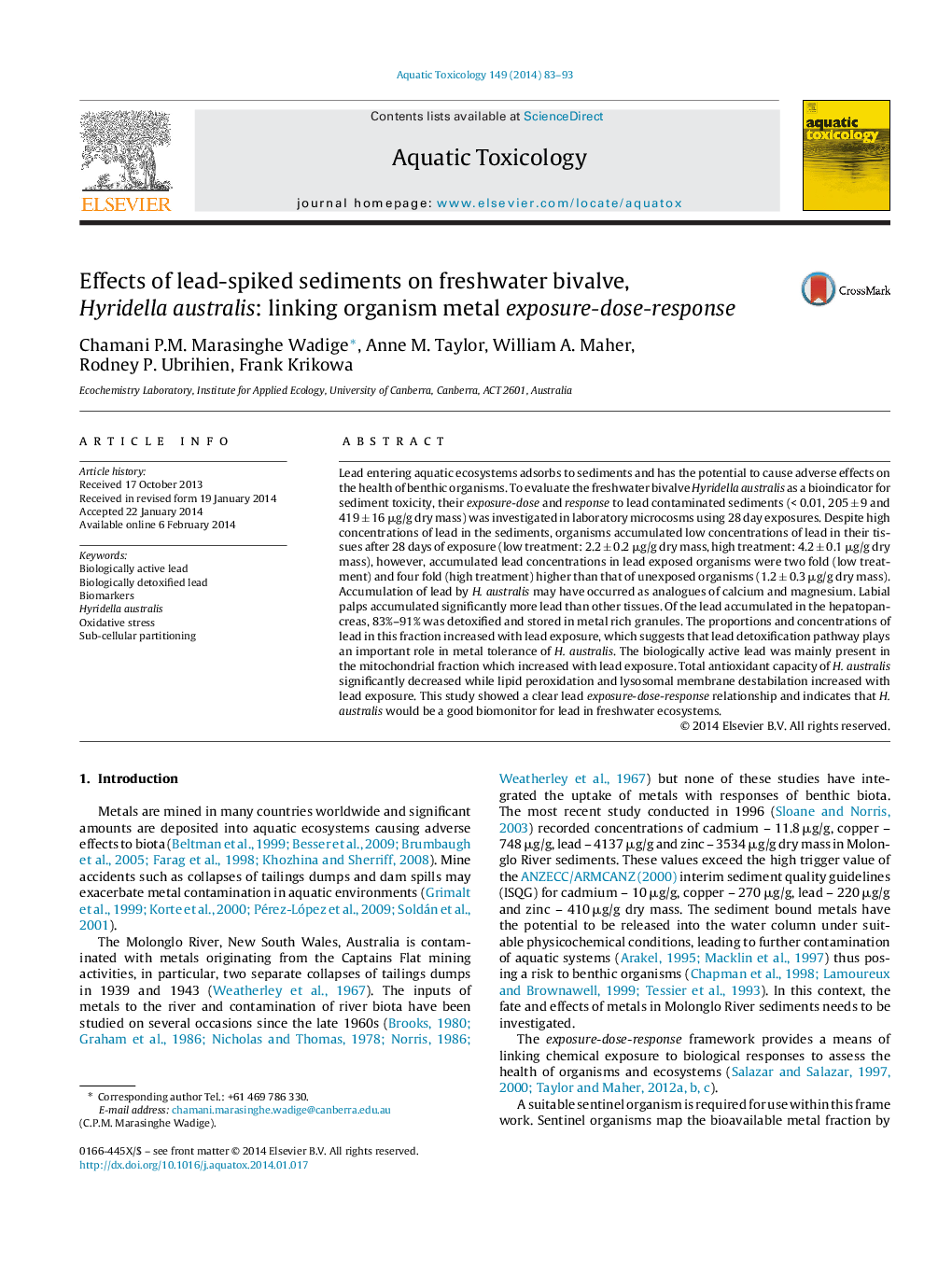| Article ID | Journal | Published Year | Pages | File Type |
|---|---|---|---|---|
| 6382458 | Aquatic Toxicology | 2014 | 11 Pages |
â¢The exposure-dose-response approach was used to assess lead exposure and toxicity.â¢Labial palps accumulated more lead than other tissues.â¢Accumulated lead was detoxified in granules or as active metal in mitochondria.â¢Increased lead dose resulted in significant impairment of the organism's health.â¢H. australis has potential as a lead biomonitor in freshwater environments.
Lead entering aquatic ecosystems adsorbs to sediments and has the potential to cause adverse effects on the health of benthic organisms. To evaluate the freshwater bivalve Hyridella australis as a bioindicator for sediment toxicity, their exposure-dose and response to lead contaminated sediments (< 0.01, 205 ± 9 and 419 ± 16 μg/g dry mass) was investigated in laboratory microcosms using 28 day exposures. Despite high concentrations of lead in the sediments, organisms accumulated low concentrations of lead in their tissues after 28 days of exposure (low treatment: 2.2 ± 0.2 μg/g dry mass, high treatment: 4.2 ± 0.1 μg/g dry mass), however, accumulated lead concentrations in lead exposed organisms were two fold (low treatment) and four fold (high treatment) higher than that of unexposed organisms (1.2 ± 0.3 μg/g dry mass). Accumulation of lead by H. australis may have occurred as analogues of calcium and magnesium. Labial palps accumulated significantly more lead than other tissues. Of the lead accumulated in the hepatopancreas, 83%-91% was detoxified and stored in metal rich granules. The proportions and concentrations of lead in this fraction increased with lead exposure, which suggests that lead detoxification pathway plays an important role in metal tolerance of H. australis. The biologically active lead was mainly present in the mitochondrial fraction which increased with lead exposure. Total antioxidant capacity of H. australis significantly decreased while lipid peroxidation and lysosomal membrane destabilation increased with lead exposure. This study showed a clear lead exposure-dose-response relationship and indicates that H. australis would be a good biomonitor for lead in freshwater ecosystems.
